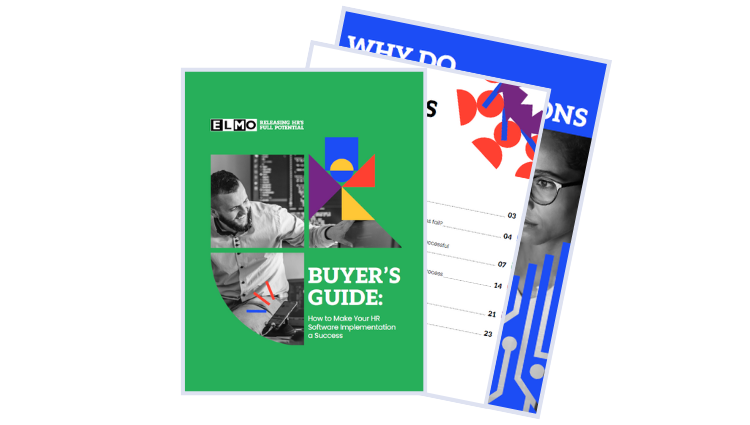The Benefits of Strategic Workforce Planning
Invest in strategic workforce planning to build a future-ready team, reduce hiring costs, and boost overall organizational performance.

What is strategic workforce planning?
Workforce planning involves aligning the company’s overall business objectives with its people strategy. At its core, workforce planning is all about ensuring you have the right number of employees in the right roles at the right time, equipping the organisation with the skills to deliver on its short and long-term goals.
It includes identifying the current and future workforce needs of the organisation, determining the gap between the current workforce and future requirements, and developing strategies to close that gap.
Consider the following four questions:
- Which roles do we need?
- How many employees do we need for the work available?
- What is our budget and cost base?
- How much flexibility do we have?
It may sound simple, yet many organisations overlook the importance of strategic workforce planning – especially while in the growth phase. The excitement of rapidly growing a business can cloud leaders’ judgment as they consider which roles and skills they truly need.
Why is strategic workforce planning important?
Workforce planning is a balancing act. By being strategic, you can ensure your business is not over- or understaffed, and that your workforce is agile enough to adapt to change while also remaining economical.
Of course, a key objective for any business should be to ensure that the current workforce is operating at an optimal level, but it’s also important to look ahead. The real value of workforce planning comes from being prepared for future growth and anticipating the talent requirements for the future based on the business’s long-term goals.
Strategic workforce planning also ensures an organisation’s recruitment budget is used wisely. After all, recruitment is expensive. Having to make redundancies can be equally as expensive. That’s why it is crucial for businesses to align their talent and skills acquisition with their long-term goals.
According to ELMO Software’s 2023 HR Industry Benchmark Report, workforce planning is a high priority for almost half of respondents. In New Zealand, 50% of respondents said workforce planning is a high priority, compared to 46% in Australia.
What are the benefits of strategic workforce planning?
Without an effective workplace planning strategy, a business cannot expect to operate efficiently. Their recruitment will be haphazard and short-sighted, rather than effective in the long-term.
The top benefits of effective workforce planning include:
- Targeting skills gaps and areas for improvement
- Identifying opportunities for internal upskilling and promotions
- Increasing productivity and efficiency
- Boosting employee engagement and retention
- Enhancing agility and adaptability
- Improving talent acquisition and development
The 4 key steps in strategic workforce planning

1. Analysing the current workforce and future business needs
By examining and evaluating the productivity of the current workforce, you can assess whether or not it meets the organisation’s existing needs. Consider the following questions:
- Does the supply of work exceed the current staffing levels?
- Are employees able to manage their workload, or are they struggling to deliver the work required?
- What are the organisation’s growth plans for the next one, five or ten years?
Most likely, HR practitioners won’t be able to answer these questions alone. Workforce planning requires the input of business leaders and department heads to understand your current and future needs.
Once a baseline is established, you can start to look toward the future needs of the business and how the people strategy will need to evolve to suit these requirements.
2. Identifying skills gaps and areas for improvement
After establishing the current and future workforce needs, you should next aim to identify skills gaps. These are areas where the business is lacking the skills required, either now or in the future. Once you’ve identified possible skill gaps, you can shift focus to how the organisation is going to fill those gaps. Is the preference to upskill and promote internally, or to hire outside talent?
This also goes the other way, in the instance where a company has too many staff for its needs or too many similar skills. As a result, this could mean that fewer people need to be hired in the future or a restructure of the workforce may be necessary to better futureproof the business.
3. Creating a talent strategy
Effective recruitment, retention and internal training and development relies on having a solid talent strategy. So after you’ve analysed the workforce against the business strategy and discovered where the company’s current and future skill gaps lie, you can begin creating a talent strategy that matches up with the outcomes of these assessments. This means that if you already have an existing talent strategy for the organisation, it may need to be revisited and modified.
4. Implementing and monitoring the plan
Now it’s time to implement the new workforce planning strategy. Your plan will revolve around the business strategy and solving any issues related to skills shortages, training and development, succession planning, recruitment and retention. Once the plan has been put into action, you need to carefully monitor the outcomes to ensure that things are moving along at the correct pace.
If everything is falling into place, then you’ve successfully managed to build a workforce that is not over- or understaffed, has the necessary skills and knowledge, fits into the company’s budget and is still agile enough to adapt and evolve to the changing environment.
Challenges in strategic workforce planning
Effective workforce planning has become more critical than ever before, as organisations face new, upcoming challenges. The most obvious challenge businesses face right now is economic uncertainty, which could have consequences across the market and affect the business strategy of many organisations.
Other challenges in strategic workforce planning may include:
- Lack of data or inaccurate data
- Limited resources
- Resistance to change
- Uncertainty about future needs
- Increased automation in the workforce
Best practices for strategic workforce planning
1. Be proactive
Don’t wait for a critical skills gap to appear in the company – take action and start your workforce planning now. Being proactive could save the business time and money in the long run and ensure that employees remain engaged and don’t become overworked and stressed.
2. Make use of technology and analytics
Effective workforce planning can’t happen without data, so make sure you have the resources to collect the data you need to make decisions. And ensure that you know exactly what data you should be measuring, so that you have clear insights into areas that need improvement. This will enable you to forecast accurately and implement a solid strategy for workforce planning.
3. Foster a culture of learning and development
Ensuring you have the right person in the right job isn’t just about the hiring process. It’s also about managing performance reviews, succession planning, internal job mobility and organising the necessary skills and development training. While attracting top talent is still critical to successful workforce planning, so is employee engagement, development and retention. By actively fostering a positive work culture of learning and development, you can help current employees reach their career goals while also retaining your star performers.
4. Encourage collaboration between HR and other departments
Workforce planning is something that should follow a top-down approach, as its design is dependent on the business strategy and the company’s long-term goals. This means you need clear communication from the leadership team at the top to the HR department, who can then communicate the workforce planning strategy to the rest of the organisation. This way, managers and team leads will know exactly what to look out for when hiring new employees or recommending existing team members for training or promotions.
5. Remain flexible
Your strategy for workforce planning does not need to be set in stone. In fact, it’s much better if you’re able to remain flexible and adapt to unexpected changes as they occur. Who could have predicted what the year 2020 held for businesses and individuals? An organisation’s business strategy may change depending on many different factors, which means workforce planning will need to change along with it.
Get started on your workforce planning strategy
Workforce planning consists of many different assets. But the one that many HR professionals are struggling with right now is recruitment. According to ELMO’s latest HR Industry Benchmark Report, 30% of respondents in Australia said that attracting the right candidates was the most difficult recruitment challenge in 2023. In New Zealand, skills shortage ranked as the top recruitment challenge.
If your workforce planning strategy involves attracting and retaining the best talent in the business, then ELMO Recruitment can help. ELMO Recruitment is a highly configurable system that can assist you in streamlining the hiring process and attracting top talent while also refining recruitment workflow, reducing the time-to-hire and providing applicants with a seamless candidate experience. Visit the ELMO Recruitment product page today to find out more.
ELMO Software is a leading provider of integrated, cloud-based HR technology operating in Australia, New Zealand, and the UK. With over 3,000 customers, ELMO helps users to save valuable time, money, and resources by streamlining HR processes within one easy-to-use platform.
Highly configurable, the solutions can be tailored to meet each organisation’s unique needs and processes. What’s more, supportive implementation services and dedicated Account Managers help our clients to get the most from their ELMO platform and drive a higher return on investment. Visit the ELMO website to find out more or book a demo to experience the platform for yourself.
 HR Core
HR Core 









